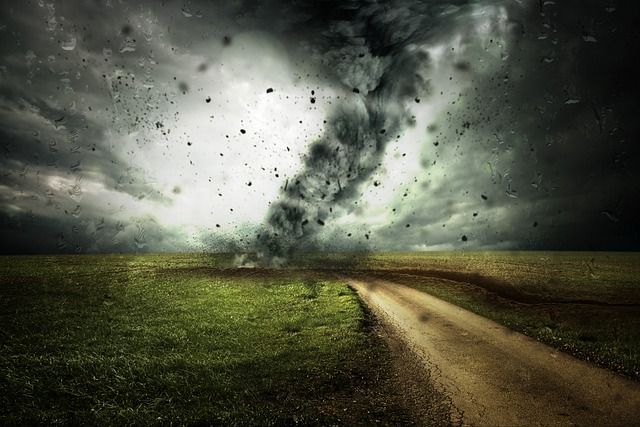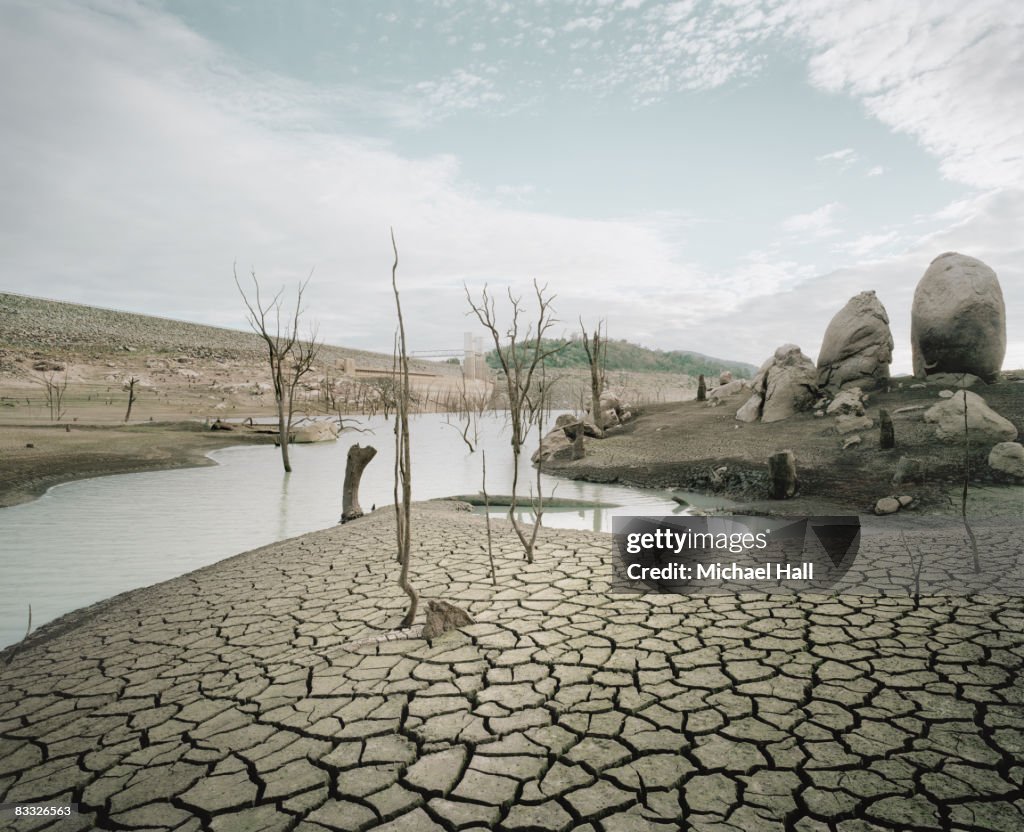
Suitable Climate for life on Earth is possible due to a combination of three key factors: our distance from the Sun, the chemical makeup of our atmosphere, and the existence of the water cycle. The atmosphere, in particular, plays a crucial role in maintaining a climate suitable for life through the natural greenhouse effect. When sunlight reaches Earth’s surface, part of it is absorbed, while the rest is reflected back. Without the atmosphere, this reflected energy would escape into space; instead, much of it is retained and redirected toward the surface by gases in the atmosphere—primarily carbon dioxide and methane, along with water vapor and others—known as greenhouse gases because of the warming effect they create.
The retained heat combines with the warmth absorbed directly from the Sun’s rays. Without this natural greenhouse effect, Earth’s average temperature would be about –18°C rather than the present average of roughly 15°C.
The greenhouse effect is a beneficial natural process, but today it has become a concern because human activity has intensified it. Global warming is significant because Suitable Climate does not disrupt the planet’s climate systems, causing widespread environmental and societal impacts. Climate change refers to long-term alterations in global or regional climate patterns.
Read more about how you can Stay fit
Read more about Climate Change
Throughout Earth’s history, climate change has occurred naturally. However, the warming observed over roughly the past 150 years is unusual because it stems from human activities. This is known as the anthropogenic greenhouse effect, which adds to the natural one. Following the Industrial Revolution, humans began releasing enormous quantities of carbon dioxide and other greenhouse gases into the air, effectively doubling atmospheric CO₂ concentrations compared to the lowest levels of the last 700,000 years (410–415 parts per million versus 180–200 parts per million). This rise is tracked daily by monitoring stations, such as the Mauna Loa Observatory in Hawaii.
For about the past 15 years, the vast body of research collected and assessed by the Intergovernmental Panel on Suitable Climate Change (IPCC) has confirmed that global warming is driven by the anthropogenic greenhouse effect—meaning it is caused by human actions. In fact, the scientific link between carbon dioxide levels and rising temperatures was identified more than a century ago by Nobel Prize–winning scientist Svante Arrhenius, and later validated in the 1960s by American researcher David Keeling.
Over the past hundred years, the planet’s average temperature has increased by 0.98 °C, and the trajectory observed since the year 2000 suggests that, without decisive action, it could reach a total rise of 1.5 °C by 2030. The effects of global warming are already clear: Arctic sea ice has been decreasing at a rate of 12.85% per decade, and coastal tide measurements show sea levels climbing by about 3.3 mm annually since 1870. The years from 2009 to 2019 marked the warmest decade ever documented, while 2020 ranked as the second warmest year on record, just slightly behind 2016. Fire seasons are becoming longer and more severe, as seen in Australia in 2019, and since 1990 the occurrence of extreme weather events—such as cyclones and floods—has risen, often happening at unusual times of the year compared to the past and with unprecedented intensity. Patterns like El Niño have grown more erratic, triggering severe droughts in regions already prone to chronic dryness, such as East Africa. Meanwhile, the Gulf Stream is weakening and could potentially shift its course. Wildlife and plant species are moving unpredictably between ecosystems, causing immeasurable harm to global biodiversity.
Describing all of this simply as Suitable Climate change is correct, but it fails to convey the urgency of the situation. We must start referring to it as the climate crisis, because while Earth’s climate has always evolved, it has never changed at such speed—and never alongside such extensive, rigid, and interconnected infrastructure as exists in modern cities and industrial systems.
Human actions, such as the burning of fossil fuels and the clearing of rainforests, are having an increasing impact on the climate and the Earth’s temperature. These activities release vast amounts of greenhouse gases in addition to those naturally present in the atmosphere, intensifying the greenhouse effect and driving global warming. The most harmful factor is, above all, the use of coal, oil, and natural gas, which account for the majority of greenhouse gas emissions. In 2019, according to McKinsey’s Global Energy Perspective 2019, fossil fuels were responsible for 83% of total CO₂ emissions, with coal-fired power generation alone contributing 36%. However, in 2020 – due to the Covid-19 pandemic – emissions dropped sharply (source: World Energy Outlook 2020). Current estimates suggest that CO₂ emissions from coal burning alone are responsible for about one-third of the 1°C rise in average annual temperatures compared to pre-industrial times, making it the largest source of emissions in human history. In terms of absolute amounts, oil ranks second, producing 12.54 billion tons of CO₂ in 2019, which represented 86% of the total carbon emissions of 14.55 billion tons.
The loss of forests also causes major harm: trees play a key role in regulating the Suitable Climate by absorbing carbon dioxide from the air, so when they are destroyed, this positive effect is reduced, and the carbon they store is released into the atmosphere, further strengthening the greenhouse effect.
Additionally, the expansion of intensive livestock farming and the application of fertilizers containing ozone-producing substances contribute to rising greenhouse gas emissions.
How can this challenge be addressed?
At the December 2015 United Nations Framework Convention on Suitable Climate Change (UNFCCC) summit (COP21), global delegates adopted the Paris Agreement — a robust framework aimed at driving decarbonization. It set long-term objectives to confront How can this challenge be addressed?
At the December 2015 United Nations Framework Convention on Suitable Climate Change (UNFCCC) summit (COP21), global delegates adopted the Paris Agreement — a robust framework aimed at driving decarbonization. It set long-term objectives to confront Suitable Climate change and established a flexible system built around commitments from individual nations. The participating countries pledged to keep global temperature rise well below 2°C above pre-industrial levels, striving to limit it to 1.5°C. The ultimate aim is to reach peak greenhouse gas emissions as quickly as possible and attain carbon neutrality in the latter half of this century.
change and established a flexible system built around commitments from individual nations. The participating countries pledged to keep global temperature rise well below 2°C above pre-industrial levels, striving to limit it to 1.5°C. The ultimate aim is to reach peak greenhouse gas emissions as quickly as possible and attain carbon neutrality in the latter half of this century.
Although COP21 marked a major achievement, several aspects of the Agreement remained unresolved. In 2018, COP24 in Katowice, Poland, adopted the “Paris Rulebook,” outlining guidelines for its implementation. Later, at COP26 in Glasgow in 2021, the international community reaffirmed its goal of achieving global net-zero emissions by 2050.
The path toward decarbonization is well-defined: an energy transition from a fossil-fuel-based mix to one powered entirely by carbon-free, renewable sources. The technologies required for this shift already exist, are effective, and should be deployed at every level. A key driver will be the electrification of end-use consumption, replacing fossil-fuel-powered systems across all sectors — from households to local and long-distance transport, and from manufacturing to heavy industry — with systems powered by renewable electricity. This transition will not only cut greenhouse gas emissions but also significantly reduce urban air pollution.
Scientific evidence provides accurate data, forecasts, and well-researched scenarios. Climate change is relentless and will not reverse itself. What is urgently needed is a profound cultural transformation — a genuine shift in mindset. There is already broad consensus on the actions required; the challenge now lies in turning that consensus into concrete results.
Climate change describes the prolonged alteration in temperatures and weather patterns caused by human actions. A rise in average global temperatures along with more frequent, severe, and unpredictable weather events are its most noticeable effects. In recent times, it has emerged as a pressing global crisis, impacting not only human wellbeing but also the survival of other species. A significant surge in greenhouse gas emissions—particularly carbon dioxide, methane, and nitrous oxide—over recent decades, largely driven by coal and fossil fuel combustion and deforestation, is the primary cause of climate change. Key consequences include a higher occurrence and intensity of natural disasters, rising sea levels, reduced agricultural productivity, and loss of biodiversity. Clear strategies for mitigation involve sharply cutting greenhouse gas emissions and expanding forest coverage across the planet. The Conference of Parties (COP 21), convened in Paris in 2015, adopted a legally binding agreement aiming to restrict global warming to well below 2 °C, with an ideal target of 1.5 °C by 2100 relative to pre-industrial levels. However, with current emission trends, the planet is on track for a 3–4 °C temperature increase by the end of this century. This issue was revisited at COP 26 in Glasgow in November 2021, where numerous nations committed to achieving net-zero carbon emissions by 2050 and halting deforestation—both crucial steps toward the 1.5 °C target. Nevertheless, even if these promises are fulfilled, the temperature is still expected to rise by about 2.4 °C. Therefore, additional urgent action is required to meet the 1.5 °C limit and safeguard biodiversity as well as human health.
Climate change describes long-term alterations in temperature and weather patterns at local, regional, or global scales, largely caused by human activities. For thousands of years, the interaction between living organisms and the climate maintained a fragile equilibrium that supported life on Earth. Since the Industrial Revolution (around 1850), this equilibrium has been gradually disrupted, with noticeable effects becoming evident by the mid-20th century. Today, it poses a serious threat to human health and the survival of biodiversity. Rising global average temperatures, along with increasingly severe and unpredictable weather events, are the most visible signs of climate change. It is now recognized as a global crisis. The latest assessment from the Intergovernmental Panel on Climate Change (AR6 Climate Change 2021) states that the current human-driven climate change is unmatched in at least the past two millennia and is worsening in every part of the world. This review provides a brief overview of the causes of climate change, its consequences for humans and biodiversity, and the mitigation strategies being implemented globally.





